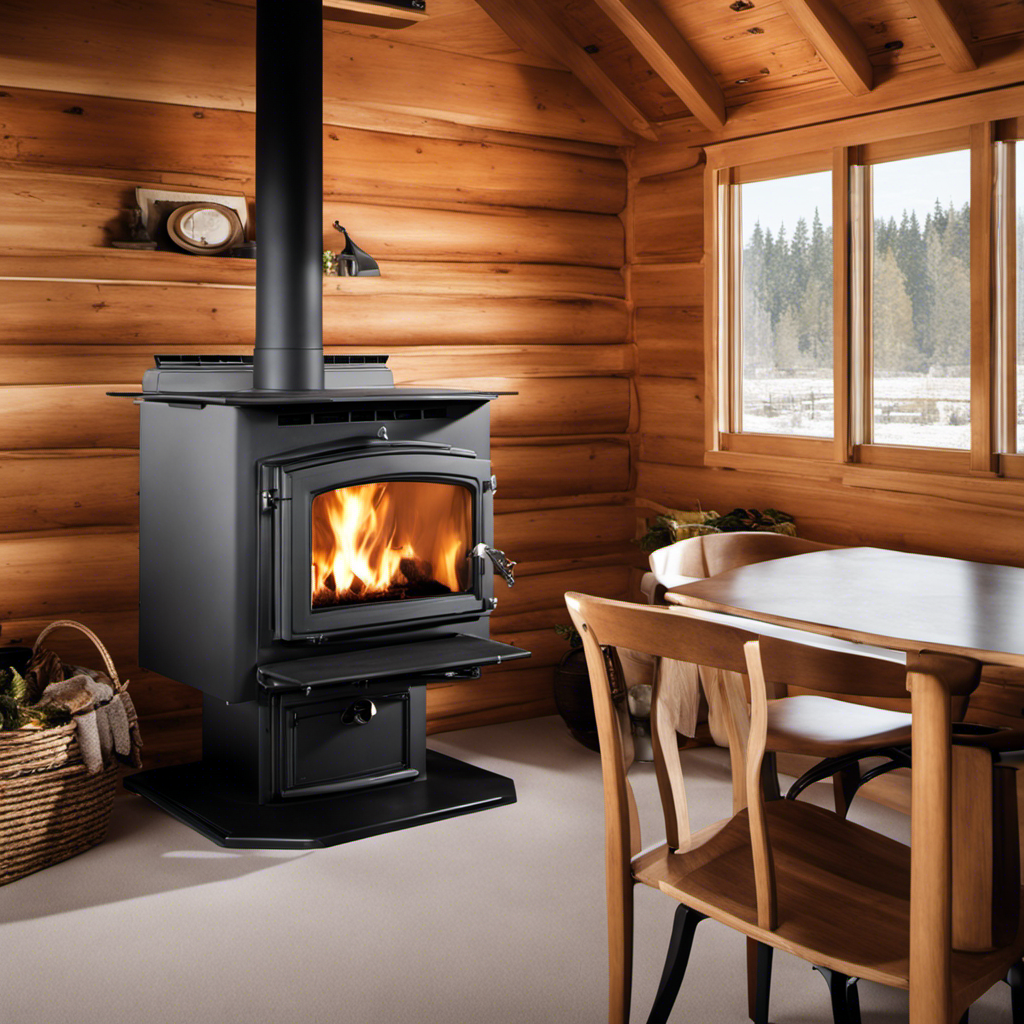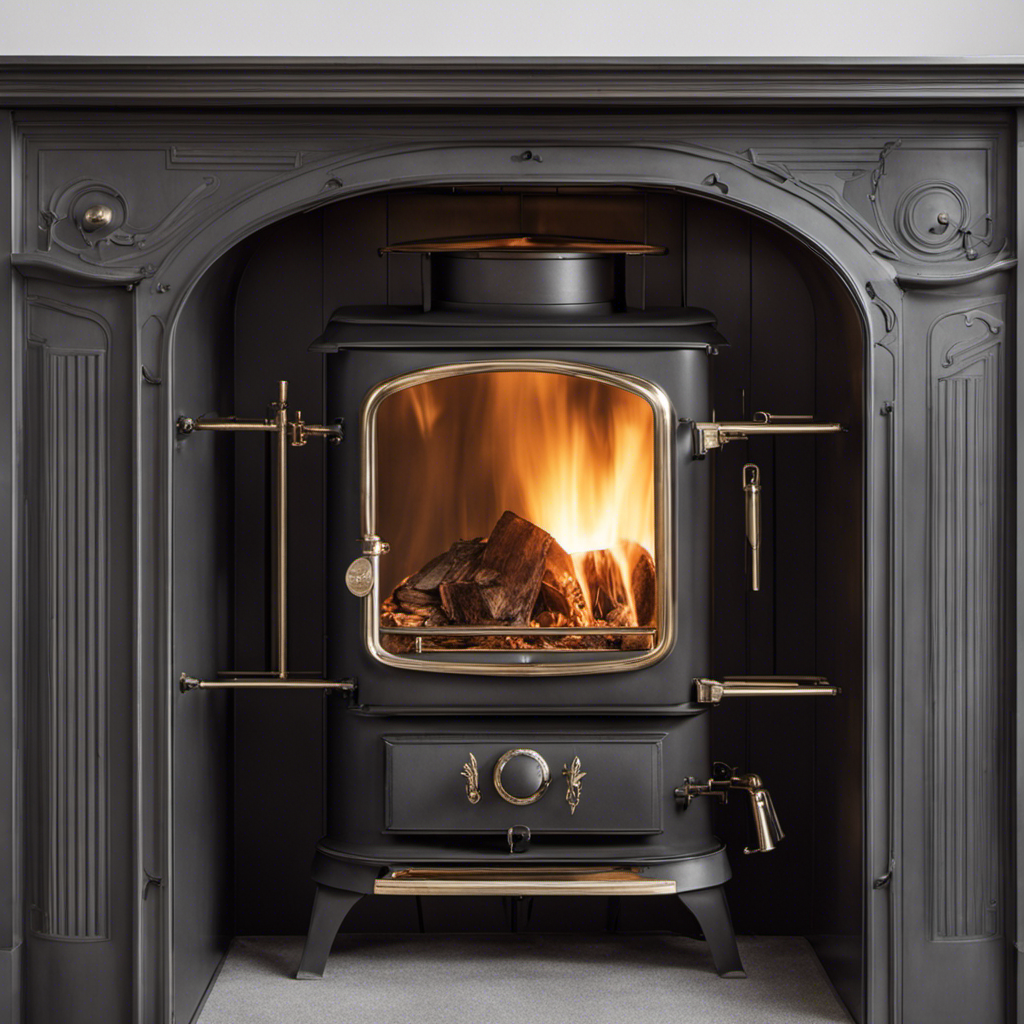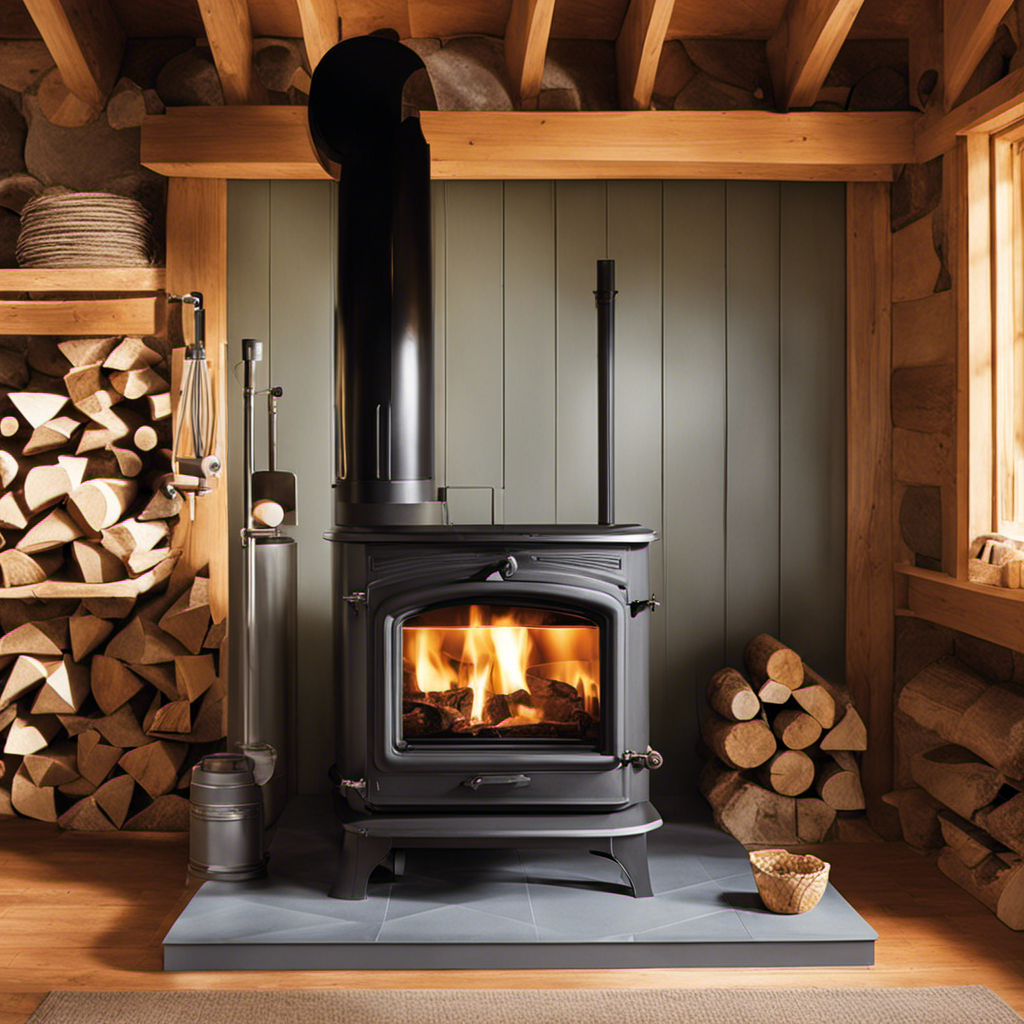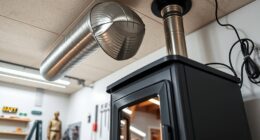I have always loved the warm and inviting ambiance a wood stove adds to my home. However, I also understand the critical need for proper ventilation to ensure safety and effectiveness.
In this article, I’ll walk you through the step-by-step process of venting a wood stove. From choosing the right venting system to sealing and insulating it, I’ll provide you with all the technical information you need to ensure your wood stove is properly ventilated.
Let’s get started!
Key Takeaways
- Choose venting materials that can handle high temperatures and corrosive byproducts, with stainless steel being the most durable and resistant to corrosion.
- Consult with a professional to determine the correct vent pipe sizing and positioning.
- Regularly inspect the chimney for blockages or creosote buildup, and install a carbon monoxide detector near the stove for safety.
- Proper installation techniques, such as using insulated stainless steel pipes and maintaining proper chimney clearance, are essential for safety and efficiency.
Choosing the Right Venting System
I think the most important factor in choosing the right venting system for my wood stove is considering the size and layout of my home. When it comes to venting systems, it’s crucial to select the appropriate materials that can effectively handle the high temperatures and corrosive byproducts of combustion. Common venting system materials include stainless steel, galvanized steel, and aluminum. Stainless steel is the most durable and resistant to corrosion, making it a popular choice for wood stove venting systems.
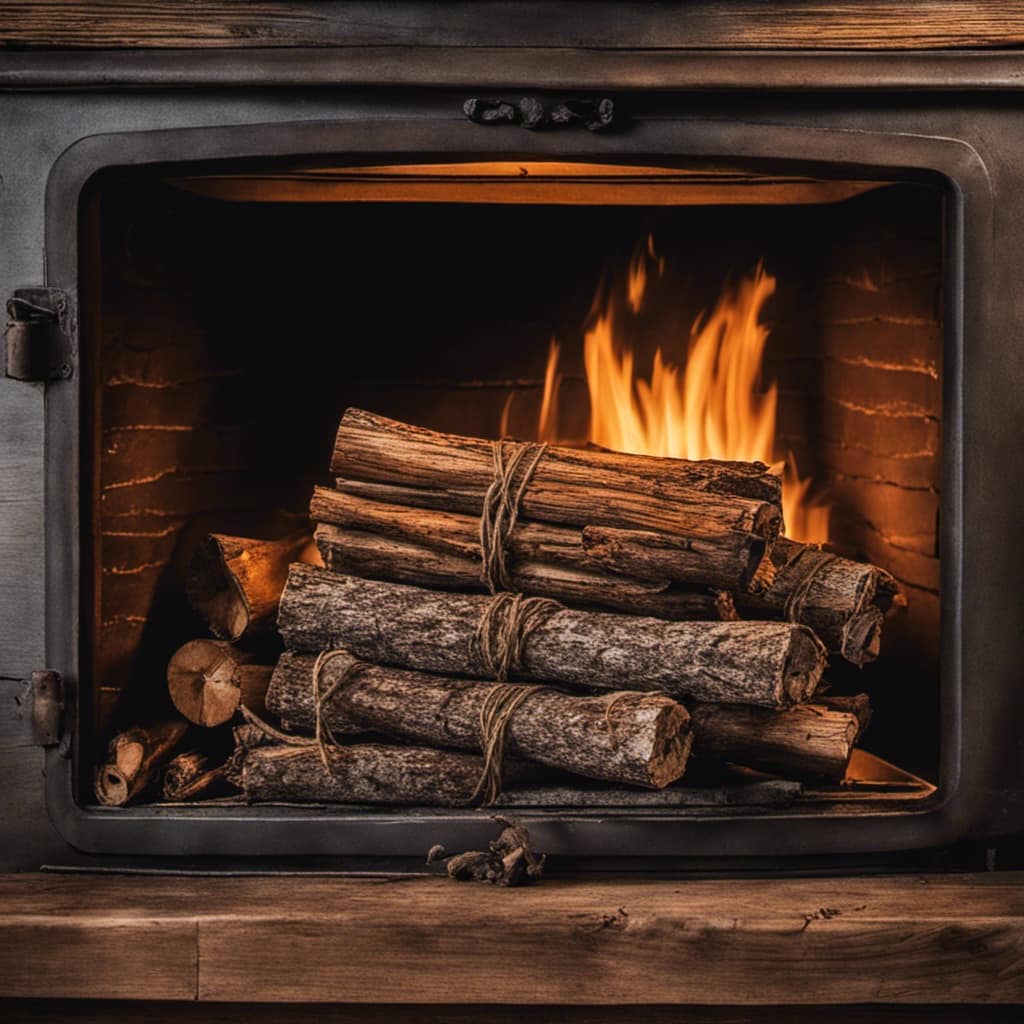
Another crucial aspect to consider is the sizing and positioning of the vent pipes. Proper sizing ensures efficient and safe operation of the wood stove. The diameter of the vent pipes should match the requirements of the wood stove manufacturer. Additionally, the length and configuration of the vent pipes should be optimized to minimize resistance and maximize airflow. It’s recommended to consult with a professional to determine the correct vent pipe sizing and positioning based on the specific requirements of your wood stove and the layout of your home.
Understanding Venting Requirements
Understanding venting requirements is crucial for ensuring the safe and efficient operation of a wood stove. It involves knowing the proper installation techniques and venting safety tips.
Venting Safety Tips
When it comes to venting a wood stove, it’s important to remember some safety tips. As a wood stove owner, I understand the significance of proper venting maintenance to ensure the safety of my home. Here are some key points to keep in mind:
- Regularly inspect the chimney for any blockages or creosote buildup.
- Install a carbon monoxide detector near the stove to monitor levels.
- Use only proper venting materials, such as insulated stainless steel pipes.
- Keep combustible materials at least three feet away from the stove.
- Never leave a fire unattended and ensure the fire is completely extinguished before leaving the house.
By following these safety tips, you can prevent potential hazards and enjoy the warmth and comfort of your wood stove without any worries.
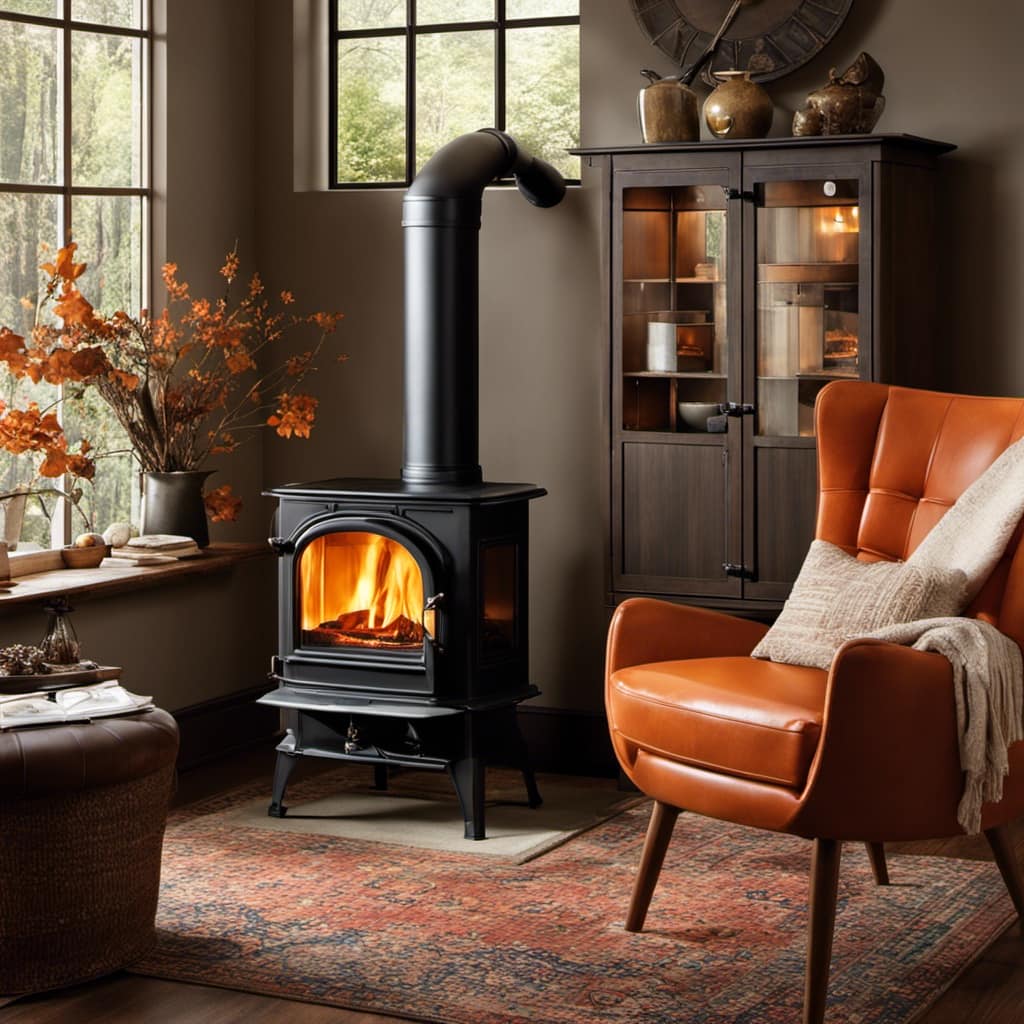
Proper Installation Techniques
Proper installation techniques are essential for ensuring the safety and efficiency of my heating system.
When it comes to venting a wood stove, choosing the right venting materials and maintaining proper chimney clearance are crucial.
Venting materials such as stainless steel or double-walled pipes are commonly used to ensure the safe removal of combustion byproducts. These materials are durable and resistant to high temperatures.
Additionally, it’s important to maintain proper chimney clearance to prevent the risk of fire. Clearances can vary depending on the type of stove and the specific installation requirements, so it’s important to consult the manufacturer’s guidelines.

Preparing the Installation Area
Before starting the installation process, I need to prepare the area to ensure a smooth and efficient setup.
Firstly, I’ll clear any debris or obstructions that may hinder the installation, ensuring a clean and safe workspace.
Secondly, I’ll carefully measure the available space to determine the optimal location for the wood stove.
Lastly, I’ll ensure proper ventilation by assessing the existing ventilation system or making necessary adjustments to meet the required specifications.
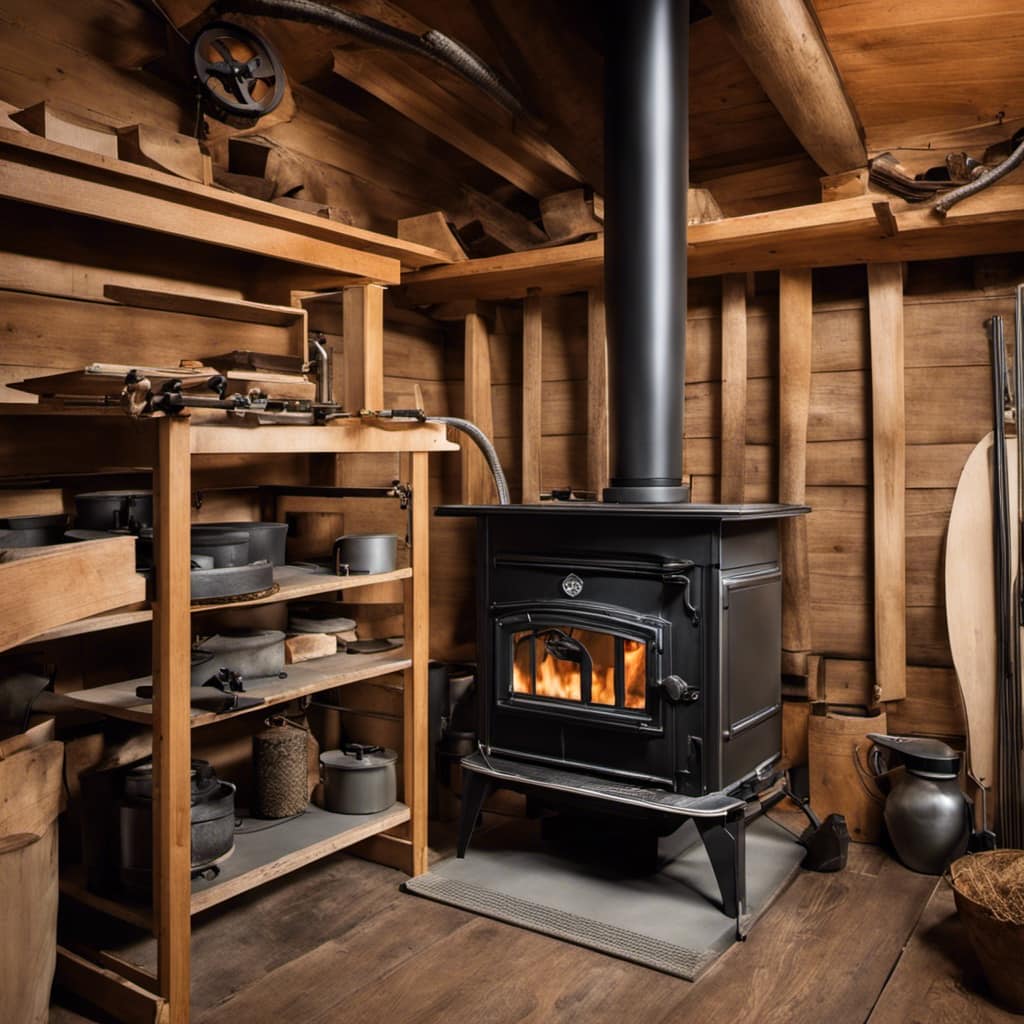
Clearing Debris and Obstructions
I can easily clear any debris or obstructions from the wood stove vent. Maintaining a clear and unobstructed vent is crucial for the safe and efficient operation of a wood stove. Here are some steps I take to ensure that the vent stays clear:
- Regularly inspect the vent for any signs of debris or blockages.
- Use a flashlight to check for any obstructions such as bird nests or leaves.
- Clear away any debris or obstructions using a brush or vacuum.
- Install a chimney cap to prevent animals from entering and building nests.
- Schedule regular professional inspections and cleanings to ensure optimal performance.
Measuring Available Space
When measuring the available space for the installation, I ensure that there’s enough clearance for proper ventilation and safety requirements. Measuring accuracy is crucial to ensure that the wood stove is installed correctly and functions efficiently.
I carefully calculate the dimensions of the designated area, considering the height, width, and depth needed for the stove. Space utilization is a significant factor in this process, as I aim to maximize the use of the available area while maintaining safety standards.
Ensuring Proper Ventilation
Proper ventilation is essential to ensure the safe and efficient operation of the installation. When venting a wood stove, there are several factors to consider in order to ensure proper airflow and prevent backdrafts. Here are five key considerations:
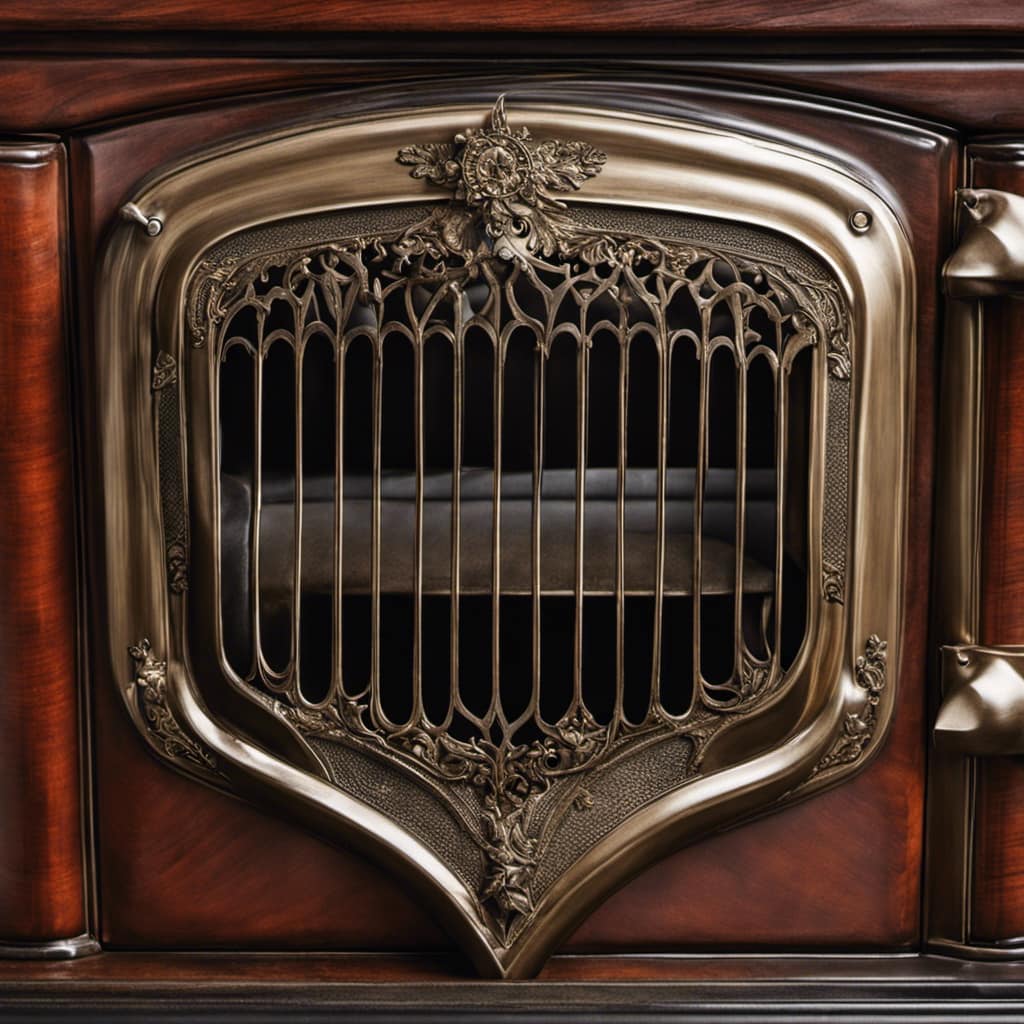
Vent Pipe Size: Selecting the correct size of vent pipe is crucial to maintain proper airflow. The diameter should be suitable for the stove’s output and the length of the venting system.
Chimney Height: The chimney should extend above the roofline to prevent downdrafts and backdrafts caused by wind. The height should comply with local building codes.
Clearance from Combustibles: The vent pipe should be installed with the proper clearance from combustible materials, such as walls and ceilings, to prevent fire hazards.
Damper Control: A damper should be installed to regulate the airflow and prevent backdrafts when the stove isn’t in use.
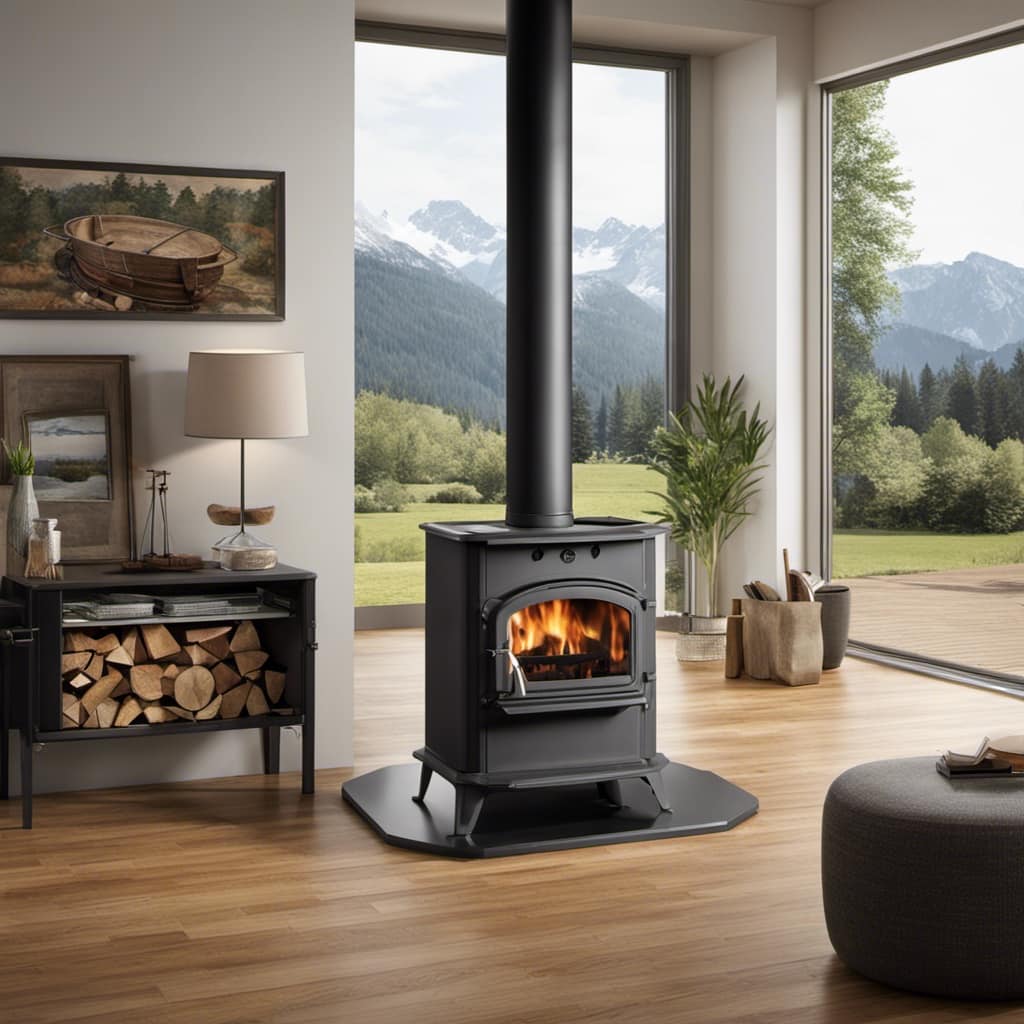
Regular Maintenance: Regular inspection and cleaning of the venting system are crucial to ensure that it remains free from debris and blockages, allowing for efficient airflow and preventing potential backdrafts.
Installing the Vent Pipe
To install the vent pipe for my wood stove, I first need to measure and cut the pipe to the correct length. Proper positioning of the vent pipe is crucial to ensure the efficient and safe operation of the wood stove.
Before starting the installation process, it’s important to gather the necessary tools. These tools include a tape measure, a hacksaw or reciprocating saw, a level, a pencil, a drill with a hole saw attachment, and screws or clamps for securing the pipe joints.
Once the tools are gathered, I can begin by measuring the distance from the top of the wood stove to the ceiling or wall where the pipe will exit. This measurement will determine the length of the vent pipe needed. Using a tape measure, I carefully measure and mark the pipe at the appropriate length. Next, I use a hacksaw or reciprocating saw to cut the pipe to the desired length. I make sure to wear safety goggles and work in a well-ventilated area to prevent any potential hazards.
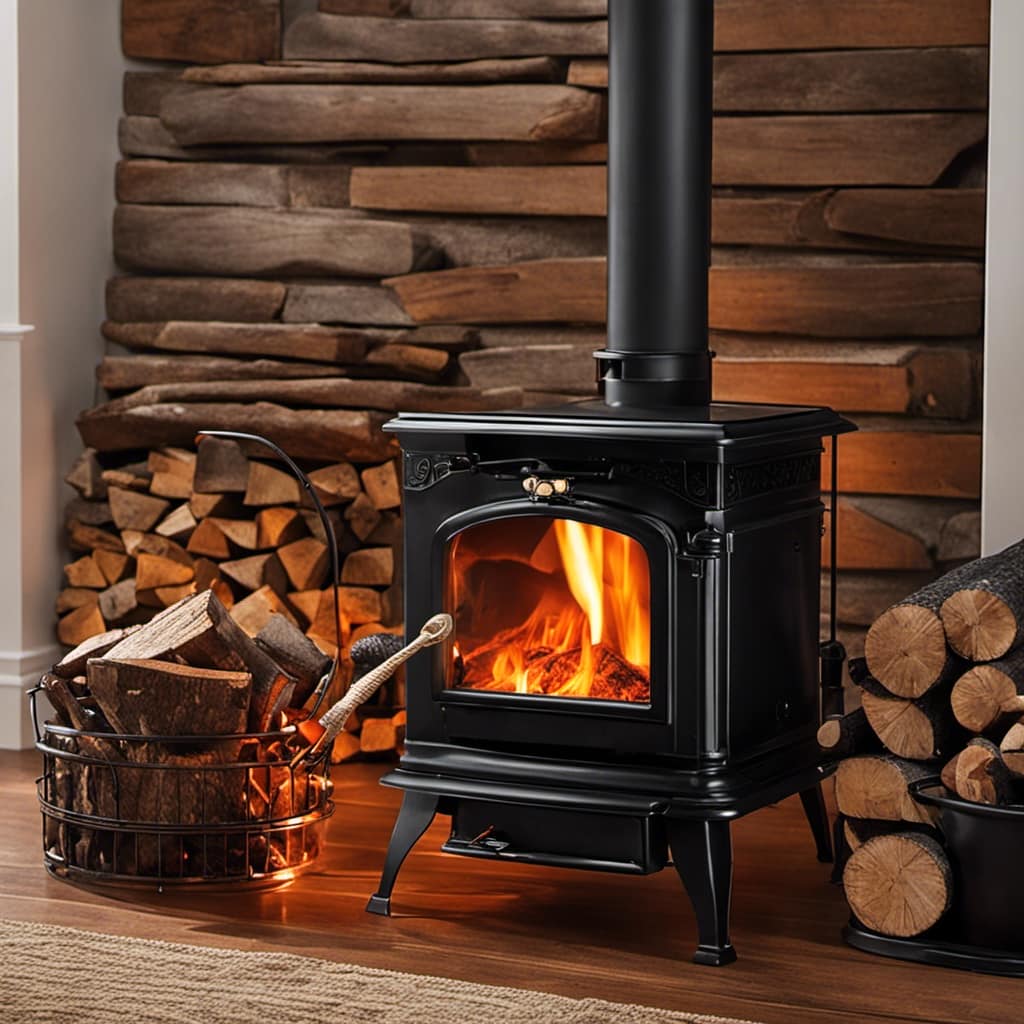
After cutting the pipe, I position it in the designated area, ensuring that it’s level and securely attached to the wood stove. This step may require using screws or clamps to secure the pipe joints and ensure a tight fit. It’s important to follow the manufacturer’s recommendations for proper positioning and installation of the vent pipe to maintain the efficiency and safety of the wood stove.
Sealing and Insulating the Venting System
I need to ensure that the venting system is properly sealed and insulated to prevent any leaks or heat loss. It’s crucial to use effective sealing techniques and quality insulation materials to maintain the efficiency and safety of the wood stove. Here are five essential factors to consider:
Sealant: Apply high-temperature silicone sealant to seal all joints and connections. This will prevent any air or gas leakage, ensuring the system’s integrity.
Gaskets: Use heat-resistant gaskets made of materials like fiberglass or ceramic fiber to create a tight seal between the vent pipe sections. This will minimize heat loss and improve the stove’s performance.
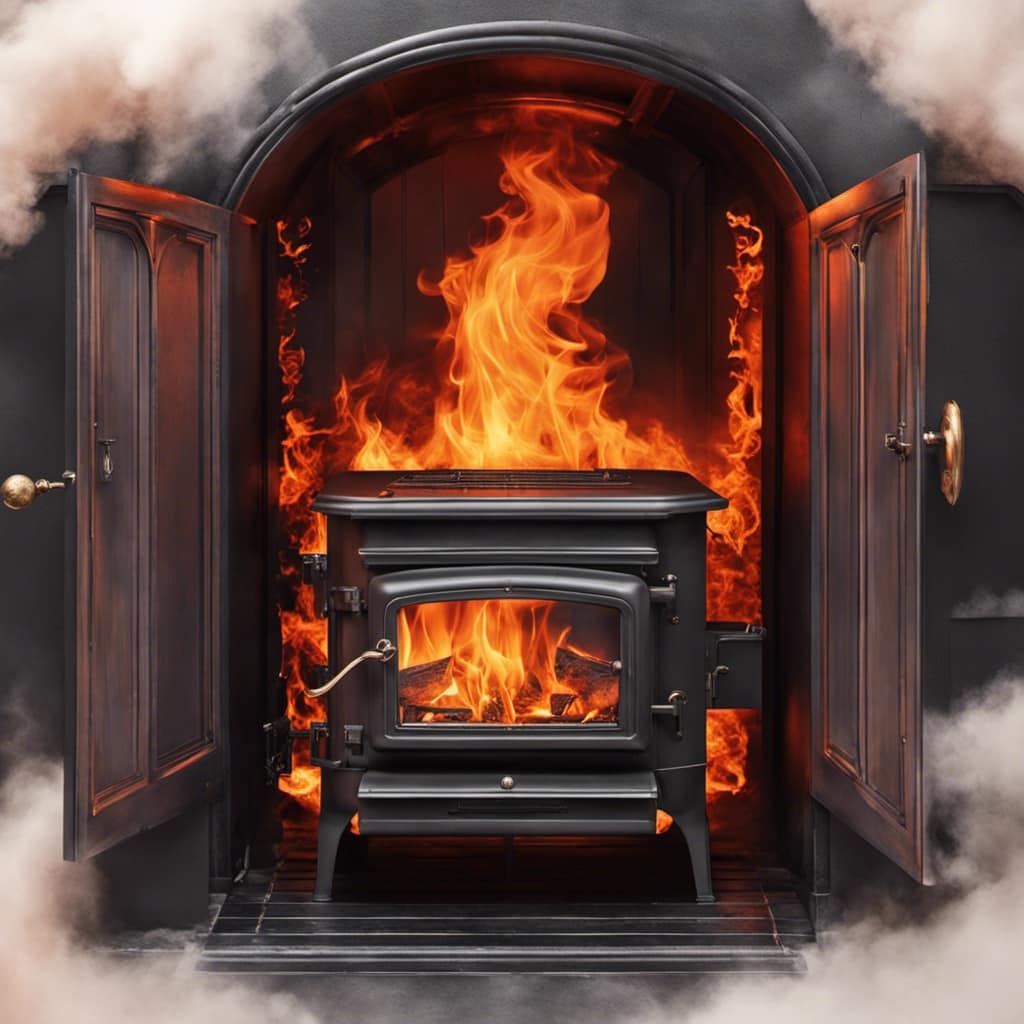
Insulation Wrap: Wrap the vent pipe with insulation material, such as fiberglass or mineral wool, to prevent heat transfer to surrounding walls or ceilings. This will enhance safety and energy efficiency.
Clearance: Ensure proper clearance between the vent pipe and any combustible materials. Use non-combustible spacers or shields to maintain a safe distance and reduce the risk of fire.
Insulated Chimney: Consider using an insulated chimney pipe for better heat retention and reduced condensation. This will enhance the overall performance and longevity of the venting system.
Regular Maintenance and Troubleshooting Tips
Now that we’ve discussed the importance of sealing and insulating the venting system, let’s move on to the next crucial aspect of maintaining a wood stove: regular maintenance and troubleshooting tips.

When it comes to venting troubleshooting, there are a few common venting problems that you may encounter. One such issue is a blocked chimney or flue. Over time, creosote and debris can accumulate in the chimney, obstructing the airflow and causing smoke to back up into your home. Regular chimney cleanings are essential to prevent this problem. Additionally, make sure to inspect the chimney cap regularly to ensure it’s clear of any obstructions.
Another common venting problem is inadequate draft. If you notice that the smoke isn’t properly venting out of the chimney, it could indicate a problem with the draft. Check for any obstructions in the chimney, such as bird nests or debris. Additionally, make sure that your wood stove is properly sized for your space and that the chimney height meets the recommended guidelines.
Regular maintenance, such as cleaning the flue and inspecting the chimney cap, can help prevent these venting problems. By staying proactive and addressing any issues promptly, you can ensure that your wood stove operates safely and efficiently.
Frequently Asked Questions
What Are the Different Types of Venting Systems Available for Wood Stoves?
When it comes to venting a wood stove, there are two main types of venting systems available: direct venting and chimney venting.

Direct venting uses a sealed pipe system that draws in fresh air from outside for combustion and exhausts the fumes back outside.
On the other hand, chimney venting utilizes a traditional chimney system to remove the smoke and gases produced by the wood stove.
Both systems have their advantages and it’s important to choose the one that best suits your needs and the layout of your home.
How Do I Determine the Venting Requirements for My Wood Stove?
To determine the venting requirements for my wood stove, I must first consider the size and type of stove I have. Next, I need to assess my home’s layout and decide on the best venting system option. This could include a chimney, direct vent, or a vent-free system.

It’s crucial to follow the manufacturer’s guidelines and consult with a professional to ensure proper installation and safety. By determining the venting requirements, I can enjoy a warm and cozy fire while keeping my home safe.
What Safety Precautions Should I Take When Preparing the Installation Area for a Wood Stove Vent?
When preparing the installation area for a wood stove vent, it’s crucial to prioritize safety precautions. This includes ensuring proper ventilation to prevent the buildup of harmful gases, such as carbon monoxide.
Additionally, it’s important to clear any flammable materials from the vicinity of the stove, maintaining a safe distance.
Installing fire-resistant materials, such as a non-combustible floor protector, is also recommended to minimize the risk of accidental fires.
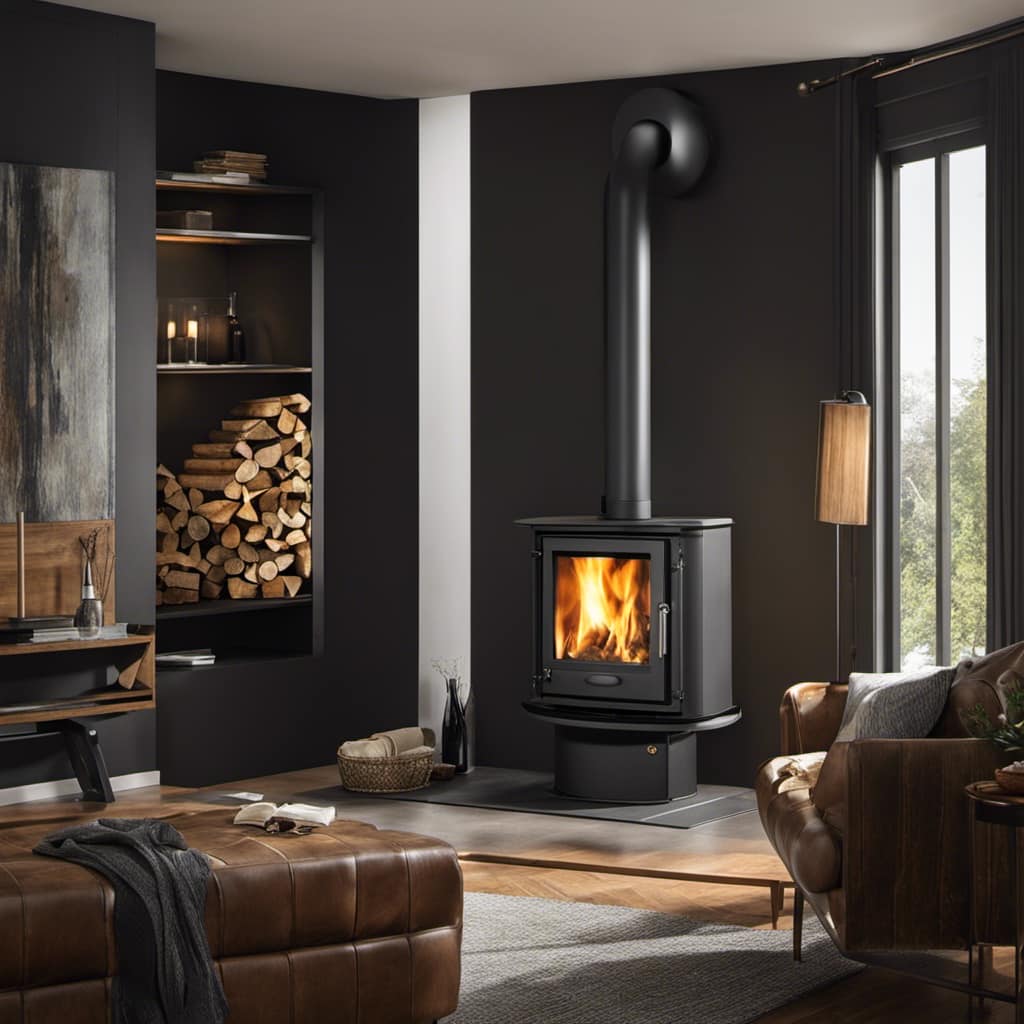
Taking these precautions will help create a secure environment for your wood stove.
Are There Any Specific Tips or Guidelines for Installing the Vent Pipe of a Wood Stove?
When it comes to wood stove vent installation, there are several best practices to keep in mind.
First and foremost, ensure that the vent pipe is installed correctly and securely. Use high-quality materials and follow the manufacturer’s instructions closely.
Additionally, make sure the vent pipe is properly insulated to prevent heat loss and maintain efficiency.
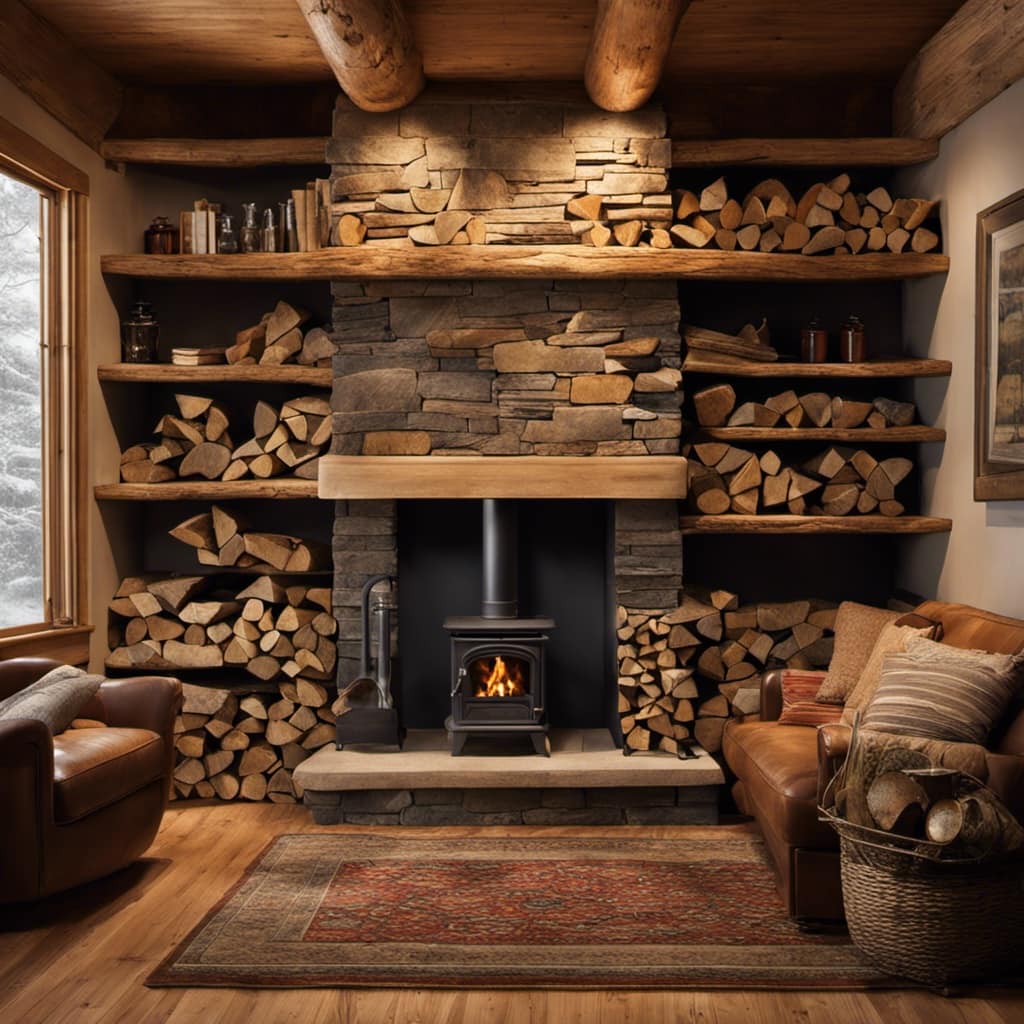
Regular maintenance and inspections are also crucial to ensure the vent system is functioning safely and effectively.
How Often Should I Inspect and Clean the Venting System of My Wood Stove?
How often should I clean my wood stove vent?
It’s recommended to inspect and clean the venting system of your wood stove at least once a year. This ensures that any debris or creosote buildup is removed, reducing the risk of chimney fires and ensuring proper ventilation.
Can I use a different type of venting system for my wood stove?
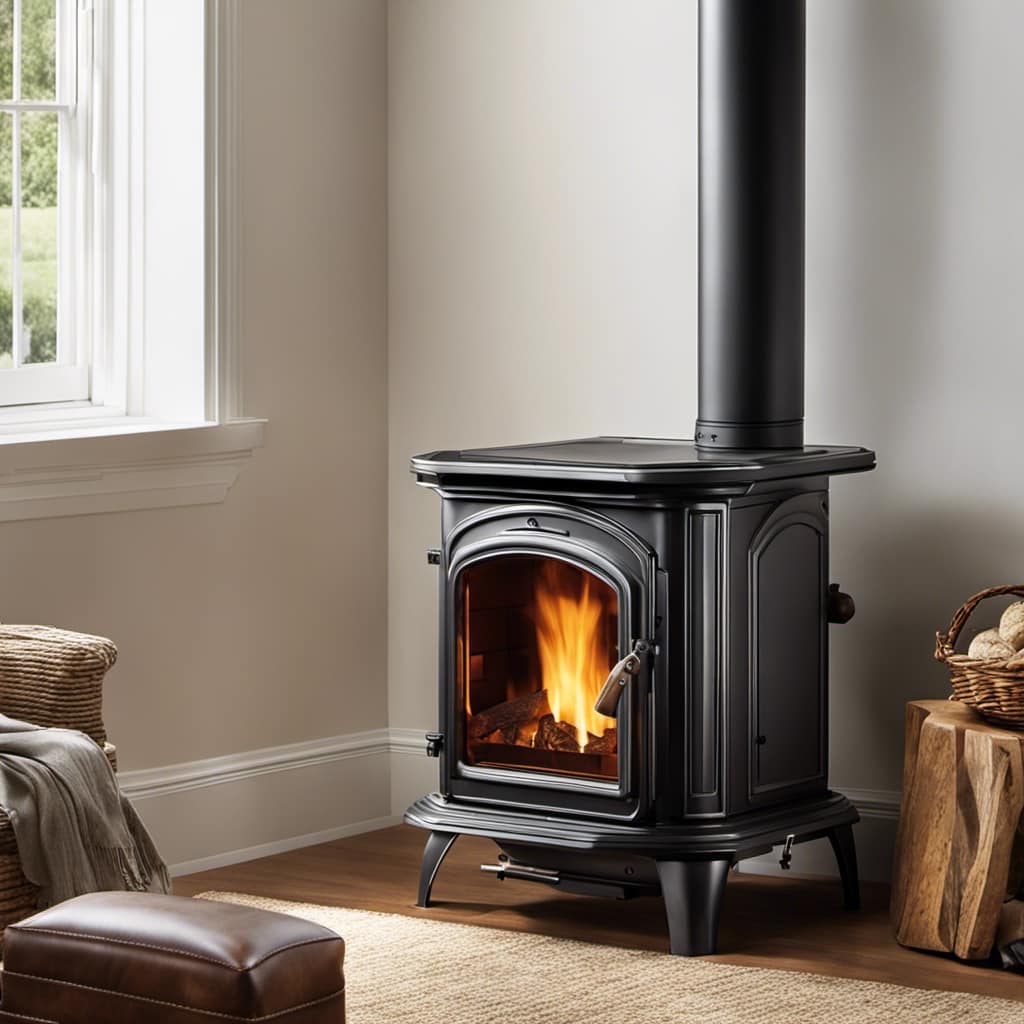
It’s important to consult with a professional to determine the appropriate venting system for your specific wood stove model, as different stoves may require different types of venting systems.
What Are the Best Venting Methods for a Wood Stove?
Choosing the right venting method for your wood stove is crucial for safety and efficiency. A well-designed chimney will ensure proper airflow and prevent smoke buildup. It’s important to consult with a professional to determine the best venting solution for your specific vent wood stove chimney needs.
Conclusion
In conclusion, ensuring proper venting for your wood stove is crucial for safety and optimal performance.
By following the right venting system, understanding the requirements, and properly installing and maintaining the vent pipe, you can enjoy the warmth and efficiency of your wood stove with peace of mind.
Remember, a well-ventilated wood stove not only keeps your home cozy, but also protects against potential hazards.
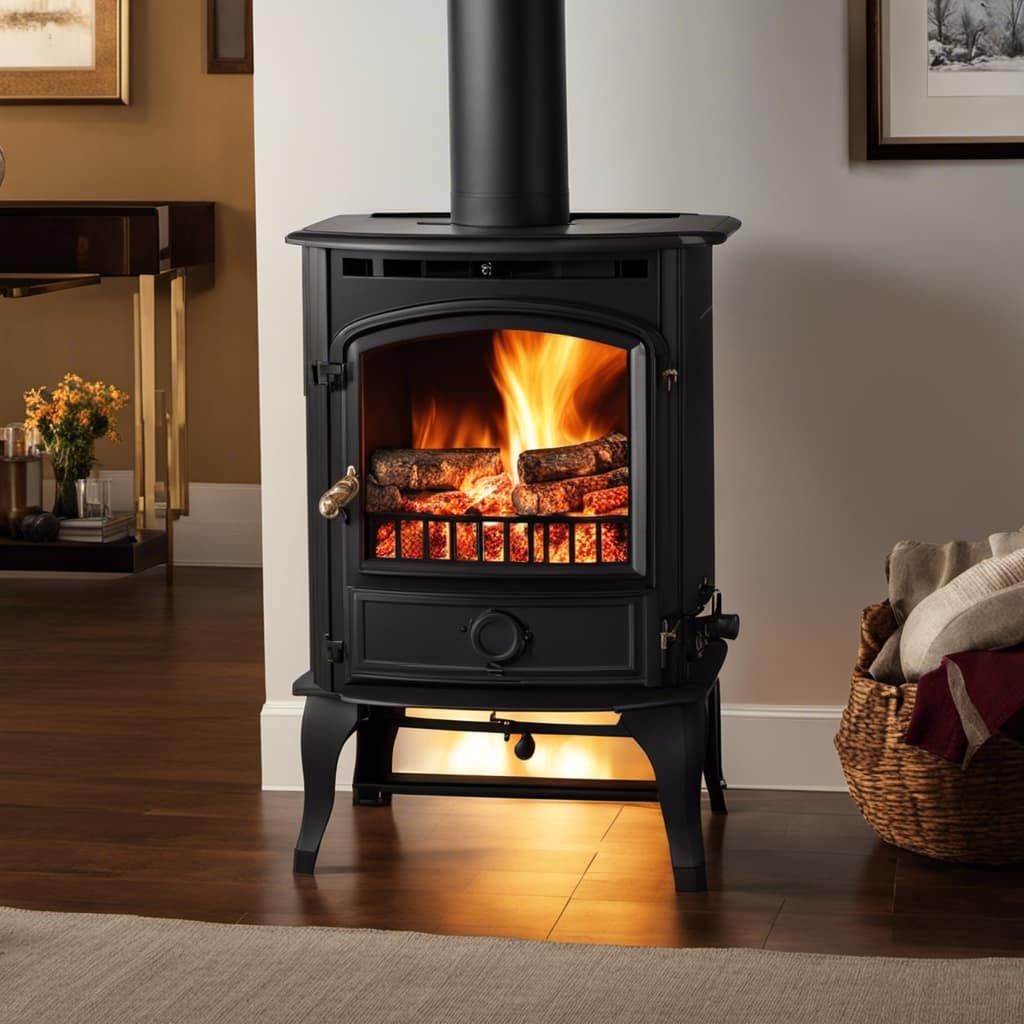
Stay informed, stay safe, and enjoy the benefits of your wood stove.
Growing up surrounded by the vast beauty of nature, Sierra was always drawn to the call of the wild. While others sought the comfort of the familiar, she ventured out, embracing the unpredictable and finding stories in the heartbeat of nature.
At the epicenter of every remarkable venture lies a dynamic team—a fusion of diverse talents, visions, and passions. The essence of Best Small Wood Stoves is crafted and refined by such a trio: Sierra, Logan, and Terra. Their collective expertise has transformed the platform into a leading authority on small wood stoves, radiating warmth and knowledge in equal measure.




